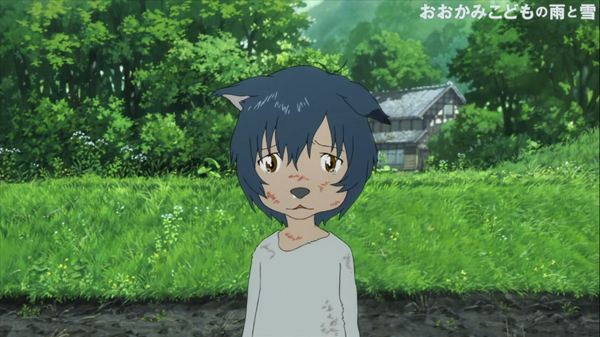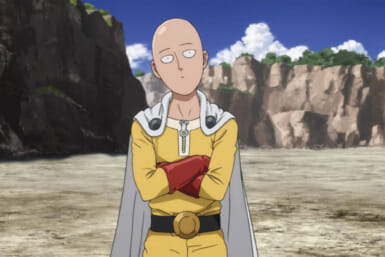However familiar with Japanese animation you are, for those of you who know a little Japanese (or even if you don’t, the visuals make this one worth it…), our writer Philip Kendall finds a good place to have you enthralled or get you started with new film, Ōkami Kodomo no Ame to Yuki.
Ōkami Kodomo no Ame to Yuki (The Wolf Children Ame and Yuki) is director Mamoru Hosoda’s third animated film, after The Girl Who Leapt Through Time and Summer Wars. Having been left slightly cold by the latter, I approached this tale – whose plot straddles the genres of family drama and fantasy – with a sense of mild trepidation.
The film sees its heroine, 19-year-old university student Hana, fall in love with a young man who soon reveals himself to be both human and wolf. Three years later, Hana is left to raise their two children alone after her remarkable partner’s sudden death and, hounded by concerned local authorities and barely managing to hide her children’s constant persona-switching from her neighbours, eventually decides to relocate to the distant countryside.
There, while Hana struggles to accustom herself to living off the land, her children quickly grow and experience everything from hunting in the forest to regular school life. Although both children possess the ability to change their physical form at will, it soon becomes clear that they have distinct personalities and face their own personal challenges – least of all deciding which of their forms is their true ‘self’.
While the premise of the story and the sight of characters effortlessly transforming from human to wolf may be somewhat jarring at first, once the viewer suspends their sense of disbelief and allows themselves to become swept away, they are rewarded with a genuinely emotive and mature cinematic experience.
Even those whose exposure to animation extends to little more than Disney features and Saturday morning childhood cartoons, or those who struggle to shake the feeling that animated films are intended for younger audiences, will soon become absorbed in Hosoda’s story, experiencing moments of genuine tension, intrigue and beauty as the plot progresses.
Ōkami Kodomo no Ame to Yuki‘s story is skilfully told, expertly voiced and features some of the most visually stunning artwork seen in animated cinema to date.
Although an English translation of the film is not yet available, those with even mediocre Japanese language skills will find the plot and dialogue accessible. The audience chuckled, gasped and, dare I say it, shed a few tears before the end credits rolled, captivated by this emotionally rich, visually striking tale that effortlessly rivals even Studio Ghibli’s productions.









